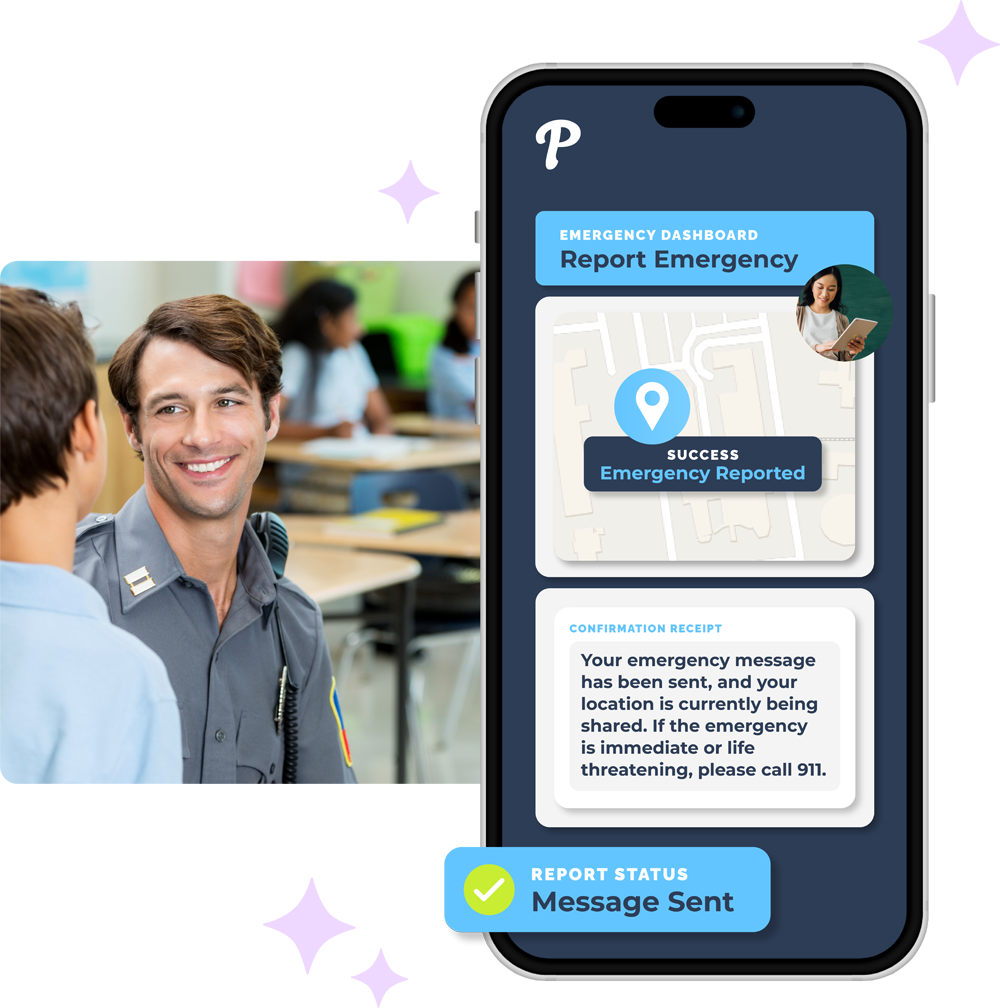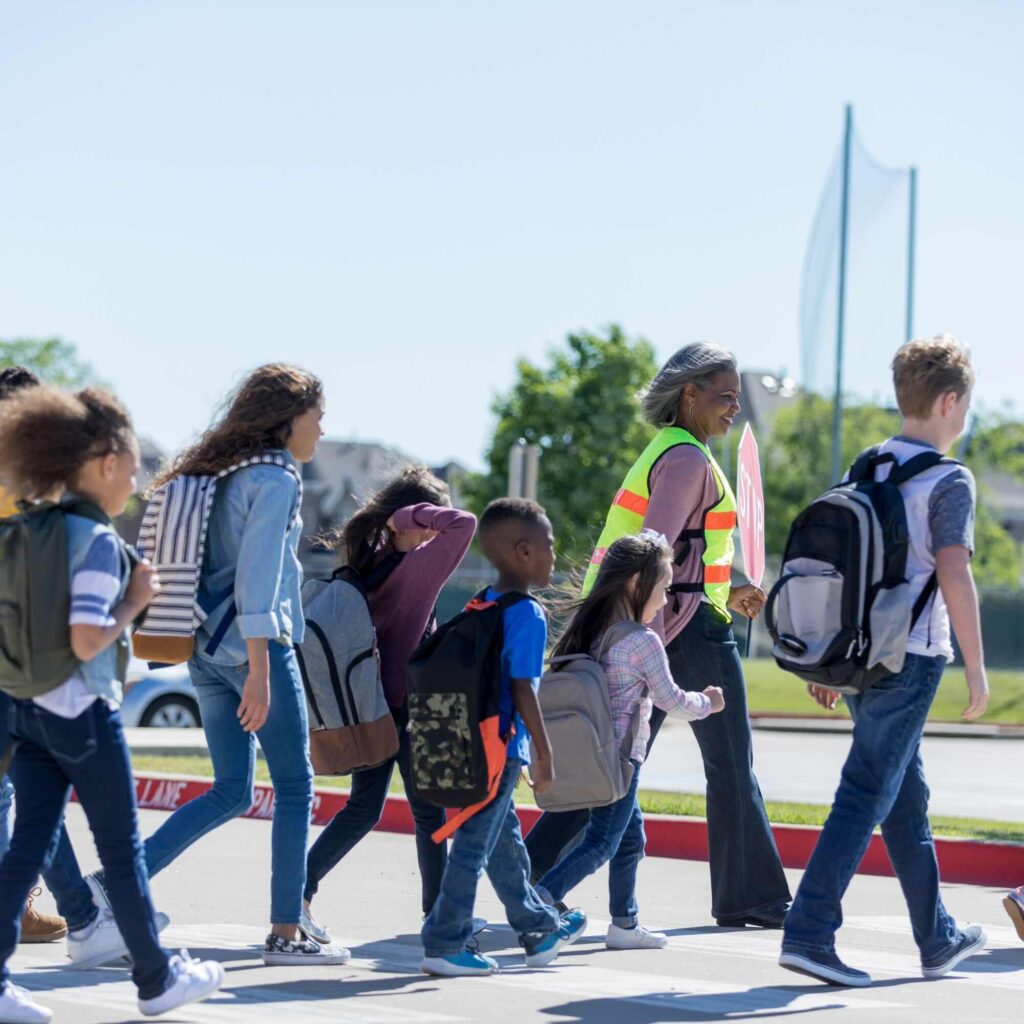Campus safety is a top priority for educational institutions. As the world becomes more connected, the risks on campuses also grow. It’s essential to provide students, staff, and parents with a sense of security that extends beyond just basic measures. The key to this is comprehensive campus safety—an integrated approach that addresses physical security, communication tools, data-driven prevention, and regulatory compliance.
By implementing a holistic safety platform, schools can protect their communities from the first step onward. This blog will explore the benefits of comprehensive campus safety, the importance of prevention, how to build trust, and the role of compliance in fostering a secure environment.
Holistic Safety Solutions: The Ultimate Approach to Campus Protection
Comprehensive campus safety starts with a well-rounded, multifaceted approach. Simply put, a single security measure is no longer enough to ensure complete protection. Modern campuses require a combination of physical security, emergency communication systems, and data analytics.
Physical Security Measures
Traditional security measures like surveillance cameras, access control systems, and campus patrols are still necessary. However, they must be enhanced to keep pace with modern challenges. Today’s systems should include AI-powered surveillance cameras that can identify suspicious behavior, emergency call stations, and real-time monitoring. Physical security should be integrated seamlessly with technology to create a unified safety system.
Emergency Communication Tools
Emergency communication is critical during a crisis. A comprehensive campus safety solution includes communication tools that can quickly notify students, staff, and parents. Whether it’s through text alerts, phone calls, or mass notifications, these tools ensure everyone on campus is informed about potential threats. The ability to send instant messages during emergencies is vital in minimizing response time and providing instructions to keep the community safe.
Data Analytics for Proactive Prevention
Data analytics plays a pivotal role in modern campus safety. By analyzing patterns of incidents, security systems can predict potential threats before they happen. Whether it’s identifying areas of the campus with higher risks or monitoring behavioral patterns that might suggest a need for intervention, data empowers safety teams to act before an incident occurs. Predictive analytics allow for proactive prevention, making campuses safer for everyone.
From Prevention to Response: A Multi-Layered Approach
A comprehensive campus safety strategy should prioritize prevention while ensuring swift and effective responses to incidents. This dual approach—prevention first, but readiness for response—ensures that campuses can handle any situation that arises.
Prevention: The First Line of Defense
The foundation of comprehensive campus safety is prevention. This begins with monitoring and identifying potential risks. Risk assessment tools help campus security teams track areas where incidents are more likely to occur, whether it’s a part of campus with poor lighting or a history of criminal activity.
Creating a culture of safety through education and awareness also plays a significant role. Regular training on how to recognize warning signs of bullying, substance abuse, or mental health crises empowers students, faculty, and staff to act before a crisis escalates.
In addition, routine safety drills and clear, visible signage about emergency exits, evacuation routes, and reporting mechanisms make students and staff feel more prepared for emergencies. When everyone knows what to do in an emergency, the likelihood of effective prevention increases.
Response: Ready and Coordinated Actions
While prevention is paramount, swift and coordinated responses are equally important. A comprehensive campus safety solution should ensure that, when an incident occurs, all necessary actions are taken quickly and in an organized manner.
Whether it’s a medical emergency, a natural disaster, or a security threat, your safety platform should facilitate a streamlined communication system that connects all stakeholders—security, administration, local law enforcement, and emergency responders. Real-time data sharing helps these groups work in unison, ensuring a faster, more efficient response.
Moreover, post-incident analysis is crucial for improving future responses. A comprehensive platform should allow schools to evaluate the effectiveness of their emergency response and make adjustments as needed.
Ensuring Campus Community Trust
A key aspect of comprehensive campus safety is building trust among students, staff, and parents. No matter how advanced your security measures are, they will only be effective if the campus community feels safe, protected, and informed. A transparent and inclusive approach to safety builds confidence that the institution is committed to their well-being.
Transparent Communication Channels
Open and honest communication is vital in ensuring campus safety. Students and staff should always know how to report safety concerns and be confident that those concerns will be taken seriously. A comprehensive platform should make reporting easy, with options like anonymous hotlines or digital reporting tools.
Regular updates on safety protocols and incident reports can also help keep the community informed. For instance, if an incident occurs, the safety platform should provide real-time updates that are easy to access and understand. This helps alleviate any confusion and ensures everyone is on the same page.
Involvement of Parents and Guardians
Parents and guardians play a critical role in maintaining a secure campus environment. They need to feel confident that the institution is taking every measure to protect their children. A comprehensive safety solution can offer tools for parents to stay informed, such as alert systems and event-driven notifications. These communication channels ensure that parents are aware of safety initiatives and can trust that their children are well protected.
Engaging Students in Safety Efforts
For a safety plan to be truly effective, students must be engaged in the process. Providing students with tools and resources to report safety concerns can make them feel more involved. Offering regular safety workshops or seminars ensures that students know their rights and how they can contribute to maintaining a safe campus.
Compliance & Reporting: Meeting Legal Standards and Fostering Trust
Another critical component of comprehensive campus safety is ensuring that your institution meets legal compliance standards. Schools are held to strict regulations when it comes to campus safety, and failing to comply can result in legal consequences and erode public trust. A comprehensive safety platform can help institutions meet these standards while providing transparent reporting.
Monitoring and Meeting Compliance Standards
Many legal frameworks exist to ensure student and staff safety. The Clery Act in the U.S., for example, mandates that schools report certain crimes on or near campus. Similarly, institutions must comply with Title IX regulations concerning harassment and discrimination. Your safety platform should track incidents in real time and help ensure that the necessary reports are generated and submitted according to legal requirements.
Safety Metrics and Continuous Improvement
A key feature of comprehensive campus safety is the ability to track safety metrics over time. By collecting data on incidents, response times, and prevention efforts, your platform can create detailed reports that assess the effectiveness of your safety strategies. Regular audits and evaluations of safety performance allow for continuous improvement.
Transparent Reporting to Build Trust
Transparency in safety reporting helps to build trust among the campus community. A robust reporting system should make it easy for administrators to share safety statistics and incident reports with students, parents, and staff. This level of transparency helps to foster a culture of openness and accountability, reassuring everyone that safety is taken seriously.
Conclusion
Comprehensive campus safety is not just about physical security—it’s about creating a safe, secure, and supportive environment for all members of the campus community. By integrating physical security measures, communication tools, and data analytics, schools can take a proactive approach to preventing incidents while ensuring a swift and effective response if something does happen.
Building trust within the campus community is just as important as addressing security concerns. Transparent communication, active engagement, and providing the necessary tools for reporting safety issues all contribute to creating a safer environment. Additionally, complying with safety regulations and tracking key metrics will ensure that institutions not only meet legal standards but also foster a culture of accountability.
Ultimately, a comprehensive campus safety solution empowers institutions to protect students, staff, and parents, ensuring that everyone can walk onto campus each day with confidence that their safety is a top priority.



